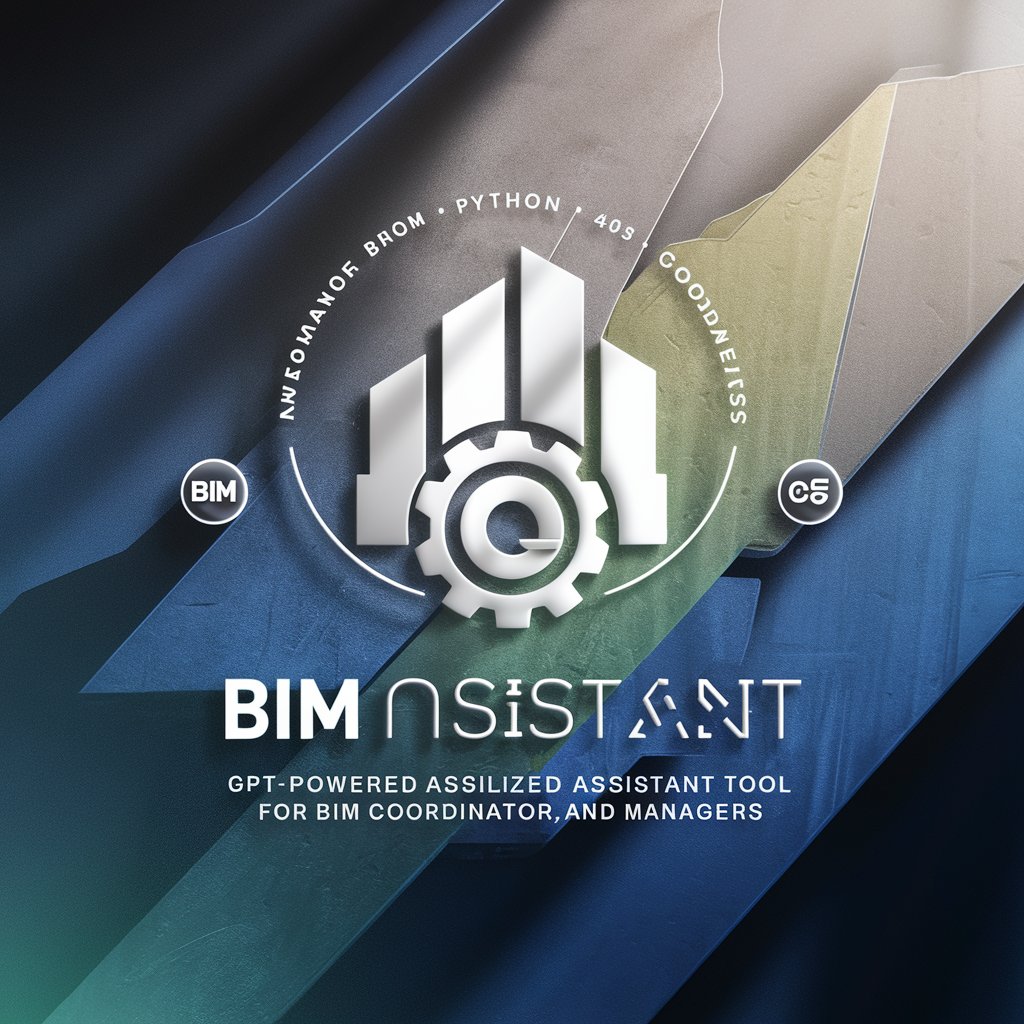
RHINO-AI content generation tool
AI-powered text generation made easy

Expert in Rhino 7, providing guidance and solutions for architects and engineers.
How do I create complex curves in Rhino 7?
Can you help me with layer management in Rhino?
What are the best practices for 3D modeling in architecture?
How to troubleshoot rendering issues in Rhino 7?
Get Embed Code
Rhino (Rhinoceros 3D) is a 3D computer graphics and computer-aided design (CAD) software application developed by Robert McNeel & Associates. It is designed to facilitate the creation, editing, and manipulation of 3D models and is used across various industries for complex geometric modeling. Rhino is renowned for its versatility and precision, making it ideal for both artistic and engineering tasks. Unlike many CAD programs, Rhino is particularly known for its ability to handle 'free-form' surfaces, meaning it can work with highly complex and organic shapes that traditional CAD software struggles with. The core strength of Rhino lies in its ability to provide users with a platform where they can create and manipulate geometries with great accuracy. This includes everything from simple 2D shapes to intricate 3D models. In addition to standard geometry, Rhino also integrates parametric design and supports plug-ins like Grasshopper for generative design. It offers a variety of advanced features like NURBS (Non-uniform rational basis spline) modeling, 3D printing compatibility, and compatibility with a wide range of file formats. A typical scenario illustrating Rhino's design purpose could be in architecture. Imagine an architect working on the design of a futuristic building with curvilinear forms. Using Rhino, the architect can quickly model the complex surfaces, test various design iterations, and seamlessly integrate it into the larger urban planning project. The same functionality is applied in automotive and jewelry design, where intricate and highly detailed models are often required.
Main Functions of Rhino
3D Modeling
Example
Creating complex organic andRhino functions and users mechanical shapes.
Scenario
A jewelry designer using Rhino to model an intricate pendant with organic, flowing curves. They use Rhino’s NURBS to ensure smooth, accurate surfaces for the final design, which can later be sent for 3D printing or milling.
NURBS Surface Modeling
Example
Designing high-precision curved surfaces for architecture and industrial design.
Scenario
In the automotive industry, a designer might use Rhino’s NURBS surface tools to create a vehicle body that requires smooth, mathematically accurate curves for aerodynamics and aesthetics. The precision of Rhino's NURBS ensures that the surface can be fabricated with exacting specifications, without loss of quality during production.
Parametric Design with Grasshopper
Example
Generative design through parametric modeling.
Scenario
An architect working on a façade for a new high-rise building might use Rhino's Grasshopper plug-in to define parametric rules that control the shape and orientation of the building's exterior panels. By adjusting a few parameters in Grasshopper, the architect can instantly see how the design changes, allowing them to optimize the structure for both aesthetics and energy efficiency.
Rendering and Visualization
Example
High-quality rendering for presentations and client reviews.
Scenario
A product designer working on a consumer electronics prototype uses Rhino’s rendering tools to generate photorealistic images of the product before manufacturing. This allows them to present a virtual prototype to stakeholders for approval, streamlining the design process and reducing the need for physical prototypes.
File Compatibility and Interoperability
Example
Working with a variety of file formats across industries.
Scenario
A mechanical engineer uses Rhino to import CAD models from other software like SolidWorks or AutoCAD for further modification. Rhino's robust support for various file formats, including STEP, IGES, STL, and others, ensures that professionals from different disciplines can collaborate seamlessly, without worrying about data loss or conversion errors.
Ideal Users of Rhino
Architects
Architects are one of Rhino's primary user groups. The software’s ability to create complex geometries, including curves, surfaces, and forms, makes it an invaluable tool for architectural design, particularly for avant-garde and non-traditional buildings. Rhino is particularly useful for designing facades, faceted structures, and organic shapes, with the ability to render and visualize designs in high detail before construction. Its integration with Grasshopper also supports parametric design workflows, allowing architects to experiment with variations of a design using algorithms.
Industrial Designers
Industrial designers benefit from Rhino’s precise modeling capabilities, which allow them to design everything from consumer products to machinery parts. Rhino’s support for high-quality rendering, as well as file interchangeability with other CAD systems, makes it a versatile tool in the product development process. Whether designing furniture, tools, or electronics, Rhino offers flexibility in the modeling and prototyping stages, and can generate complex 3D models suitable for prototyping or production.
Engineers (Mechanical, Civil, etc.)
Engineers utilize Rhino for tasks that require precise 3D modeling, such as designing mechanical components, building structures, or generating detailed technical drawings. The software’s ability to create both 3D and 2D geometry allows engineers to visualize complex designs and simulate real-world performance. Rhino’s integration with simulation software and file compatibility with other engineering tools makes it a suitable option for engineers in industries ranging from aerospace to automotive.
Jewelry Designers
Rhino is a popular tool among jewelry designers, as it allows for the creation of highly detailed and intricate 3D models of jewelry pieces. With its NURBS modeling, designers can create smooth, organic forms and test design variations, whether they are working with precious metals, gemstones, or custom settings. Rhino also supports file formats for 3D printing, which is commonly used in jewelry prototyping. The precision in modeling ensures that designs can be translated into the real world with accuracy.
3D Artists and Animators
Rhino is also used by 3D artists who need to model complex objects and environments. Its versatility in handling both organic and geometric shapes makes it suitable for various artistic fields, including film, animation, and game design. While Rhino may not be a dedicated animation tool, its modeling capabilities are complemented by rendering engines like V-Ray and Cycles, allowing 3D artists to produce photorealistic visualizations and concept art.
How to Use RHINO
Visit aichatonline.org for a free trial without login, noRHINO usage and details need for ChatGPT Plus
Access RHINO instantly without needing an account or any subscription. Just head to the website to explore the tool’s features with no commitments.
Choose the type of content or task you want to work on
Select from a variety of templates or custom content categories (e.g., academic writing, business proposals, creative writing). This helps RHINO tailor its response to your specific needs.
Input your requirements or query into the interface
Provide a brief description or detailed instructions about the task. Be specific about tone, format, and any other preferences to get the most relevant results.
Refine results based on suggestions or edits
RHINO offers drafts or initial suggestions. You can further fine-tune these outputs by providing feedback, such as adjusting tone, changing structure, or adding details.
Download, copy, or share your final output
Once you're satisfied with the content, you canHow to use RHINO easily copy it to your clipboard, download it in various formats (e.g., .docx, .pdf), or share it directly via integrated tools.
Try other advanced and practical GPTs
Italian Teacher
AI-powered Italian lessons for all levels.

Post With Big Insights
AI-powered insights for smarter decisions.

Avocat-Fiscaliste
AI-driven legal advice for tax and business

日本語ビジネスメール添削のプロ
AI-enhanced business email refinement for Japanese professionals.

PHP
AI-powered PHP tool for efficient coding.

CS AI SEO Topic Map GPT
AI-powered topic maps for SEO success.

Creador de Presentaciones
Create professional presentations with AI ease.

Parafraseo Humano
AI-powered paraphrasing for human-like results.

FLINK GPT
AI-powered writing and content generation.

Arztbriefe - Arzt Modus
AI-powered medical document creation made easy.

Astrology Transits & Reader
AI-powered astrology insights for personal growth.

Electromagnetic Fields Tutor
Master Electromagnetic Concepts with AI Power

- Academic Writing
- Creative Writing
- Social Media
- Marketing Content
- Business Proposals
Frequently Asked Questions about RHINO
What is RHINO?
RHINO is an advanced AI-powered content generation tool that assists users in creating high-quality, context-aware text for various needs, such as academic writing, business, creative projects, and more.
Do I need to sign up or pay to use RHINO?
No, you can try RHINO for free on aichatonline.org without signing up or paying for a subscription. There is no requirement for a ChatGPT Plus plan either.
What types of tasks can RHINO handle?
RHINO is versatile and can assist with academic writing, research papers, marketing content, emails, social media posts, creative writing, business proposals, and more.
How does RHINO ensure the content is accurate and relevant?
RHINO leverages deep learning models and a vast knowledge base to generate contextually relevant text. Additionally, you can guide the AI’s output by specifying preferences, which improves the results.
Can I edit the generated content?
Absolutely! RHINO’s output is editable, allowing you to refine the generated text. You can adjust style, tone, and content length as needed to better suit your purpose.






